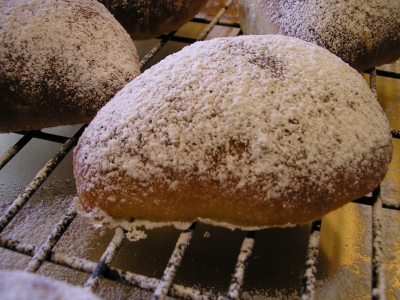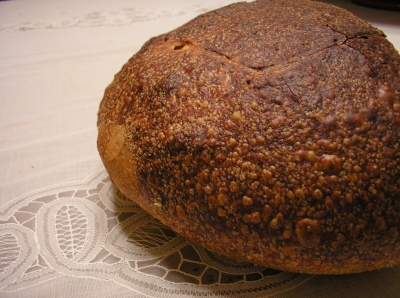
Sweet Fougasse

Matcha Cream Pan - 抹茶クリームパン

I have been really enjoying baking from Peter Reinhart's books, and have learned a lot, but at the same time, it almost gets boring to make delicious, flawless bread every time. The instructions are clear and detailed, and though I've made his ciabatta and cinnamon raisin breads in the past few weeks, it seemed silly to take pictures and write up an entry that basically says "Yup. Baked it to instructions, came out great". Fortunately for me, what I baked yesterday was miles away from that sort of experience so I have lots of tips to share on how not to make this one.
Pain de campagne au levain

Then there's also the possibility of a starter made with rye flour (or even something more unusual), one with grape skins or beer yeast added, or sourdough cultures from different parts of the world. (San Francisco sourdough is pretty different from French or German.) From as best I can tell, Mulder has a much milder flavour than Scully. Apparently Europeans tend not to like a strong acidic, sourdough flavour, so there are recipe differences to account for, but I'd say the smell of the starters supports that statement. Breads I made with Scully are more easily recognisable as sourdough, though both make good breads and are equally powerful leaveners.
Subscribe to:
Posts (Atom)